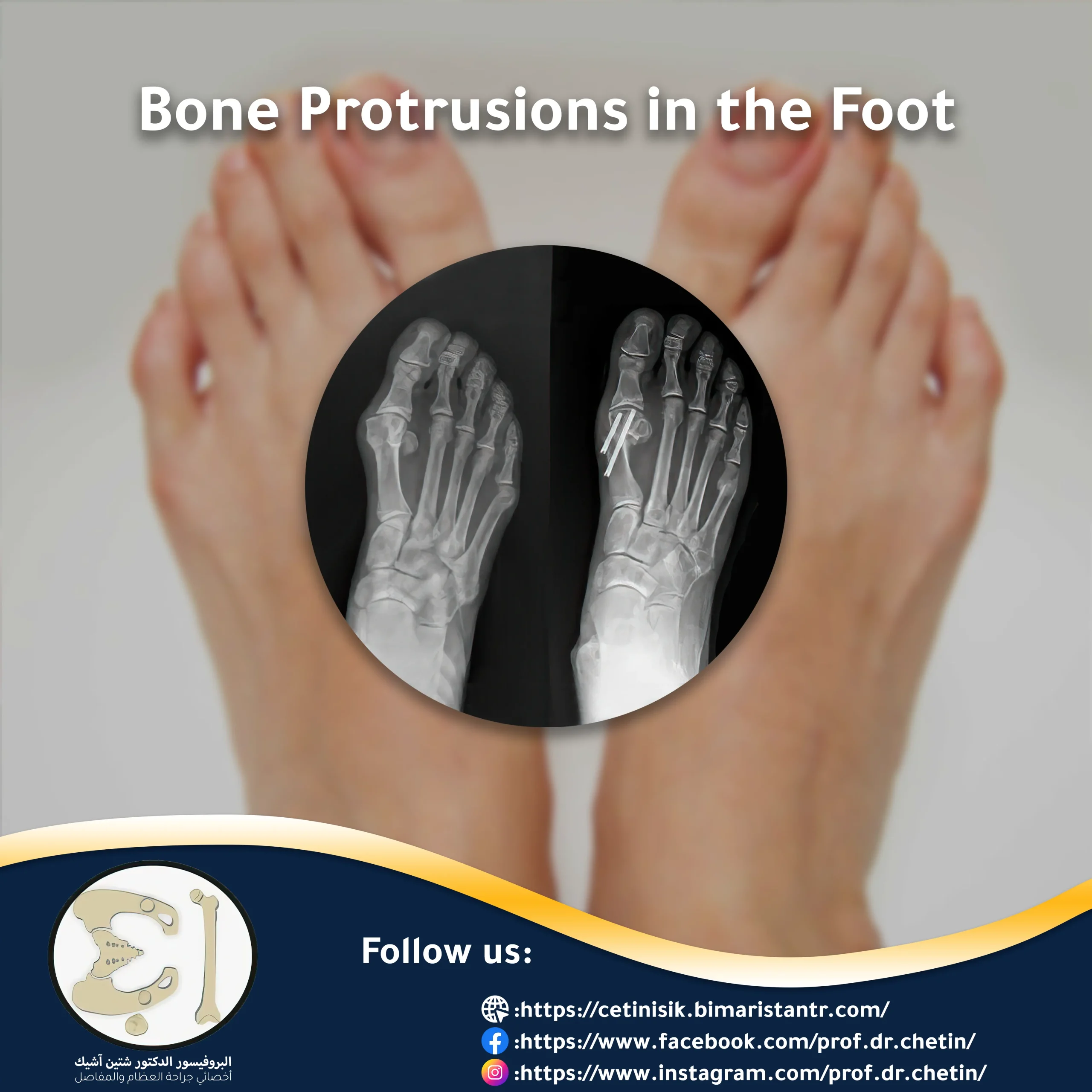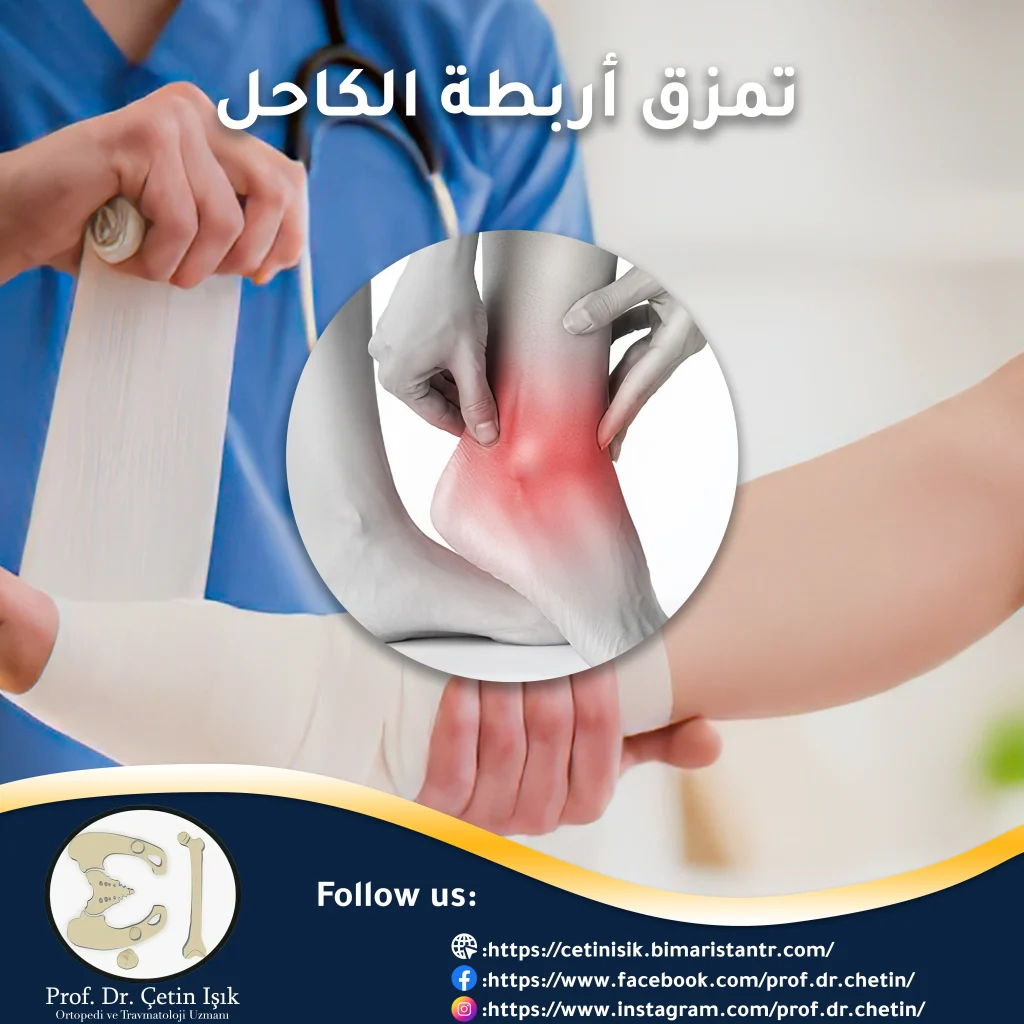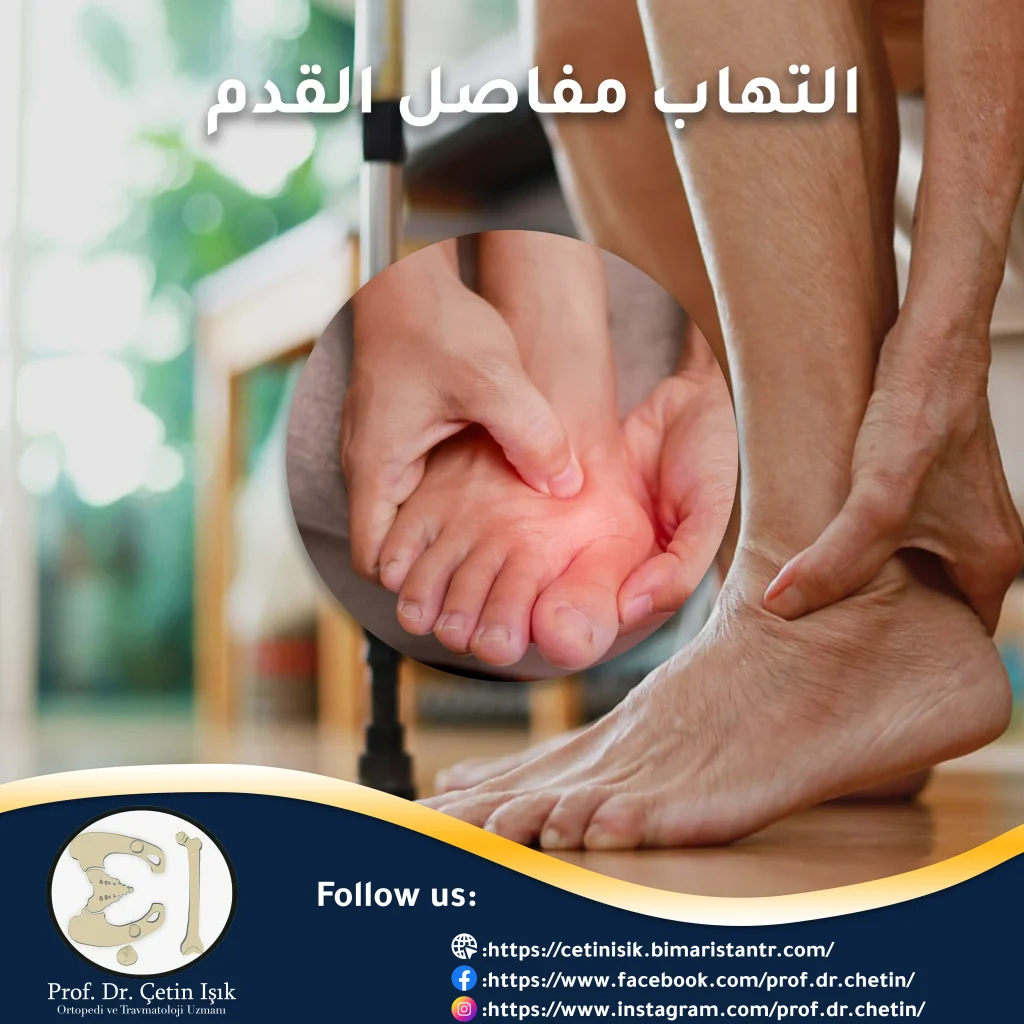Bone protrusion in the foot is one of the very common foot disorders, which worsen, causing pain and deformation of the foot. Treatment options range from relieving symptoms to surgery.
What is bony prominence in the foot?
A bony prominence in the foot, also called hallux valgus or what is known medically as a bunion, is a bump that forms on the lateral side of the foot at the base of the big toe. Then a synovial bursa forms around the bump and the entire joint becomes stiff and painful.
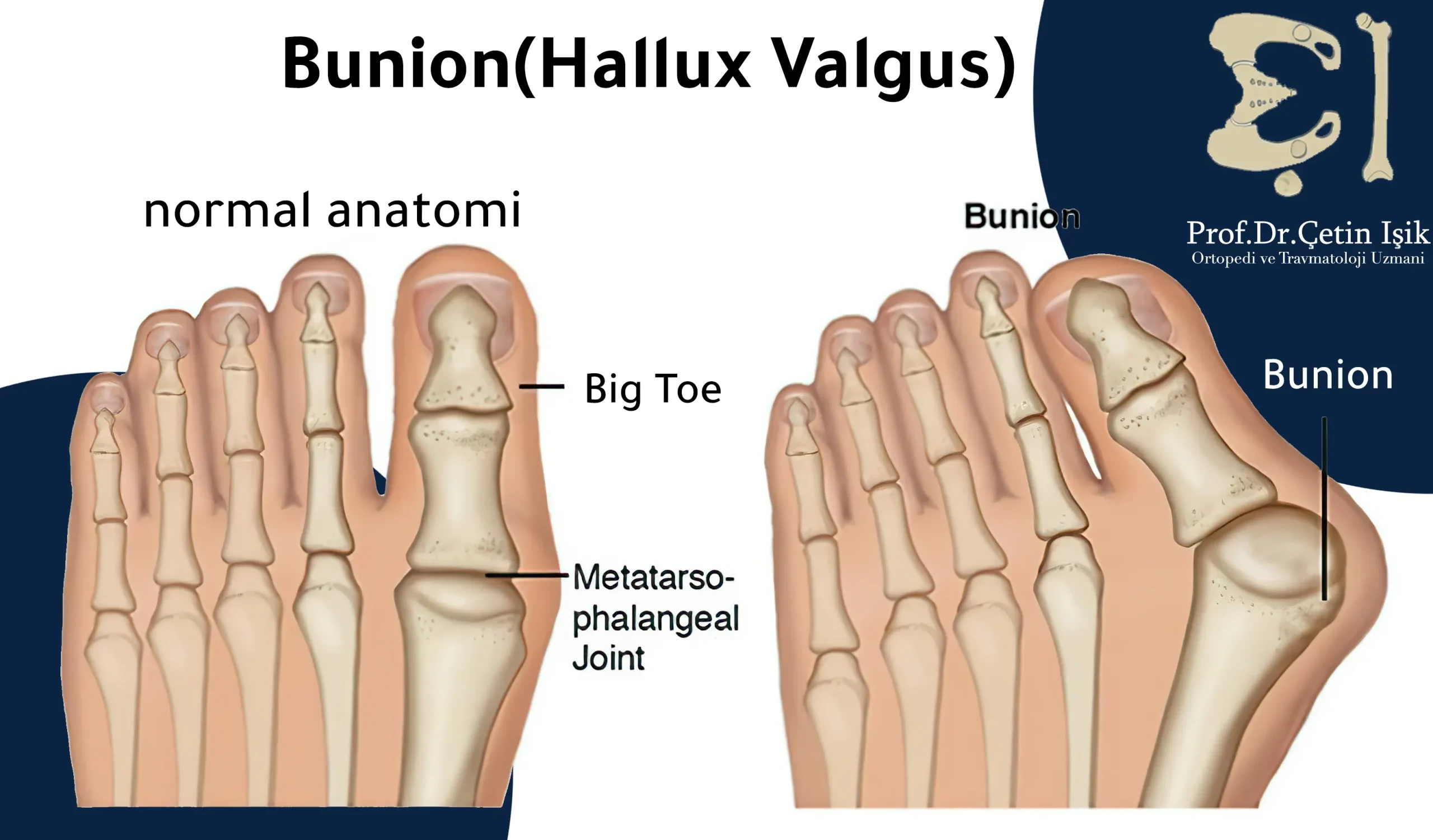
The problem of hallux valgus is more common in the elderly, usually more in women and can occur in young people between the ages of 1 and 15 years, affects 1 in 3 Americans, and the bump can appear on one or both feet.
Bunions may also occur near the base of the little toe. This is called a bunion or a tailor's bunion.
Causes of bony bump on feet
Doctors generally believe that the presence of a bony prominence in the foot arises from a complex genetic condition without identifying a clear genetic pattern, as many patients have affected relatives as well, and the risk of developing a bunion is greater for first-degree relatives such as siblings or children.
When bunion bulge occurs as part of a genetic syndrome, it follows the pattern of inheritance of the syndrome.
There are additional factors that increase the risk of developing bony protrusions in the foot, such as:
- Flat feet, which makes the toe joint unstable
- Hyperactivity
- foot injuries
- Types of arthritis, eg Rheumatoid Arthritis
- Conditions that affect both nerves and muscles, such as polio
Symptoms of bony prominence in the foot
The characteristic symptom of bunions is the formation of a bony bump at the base of the big toe and possibly the little toe at the metatarsophalangeal joint.
The bunion gets worse over time and gradually causes other symptoms, such as:
- Pain and numbness in the big toe
- Discomfort and a burning sensation when trying to bend the toe
- Painful swelling in the joint
- The growth of corns, which is an increase in the thickness of the skin at the site of the injury
- Restriction of the movement of the fingers, as the patient complains of difficulty walking or doing light-intensity sports.
- Difficulty wearing normal shoes
If you have any of the above symptoms in one of your feet, do not hesitate to contact us Contact us to answer any question.
Diagnosis of bony prominence in the foot
A doctor can often diagnose a bunion by symptoms or by looking at it directly, and then order an X-ray to check the degree of joint damage and bone alignment.
Sometimes, if the joint is very painful, swollen, and red in color, the doctor will withdraw joint fluid and analyze it to detect infectious arthritis or Gout.
Complications of bony protrusion in the foot
Severe bunions, if left untreated, can cause many complications, such as:
- Pain in the metatarsal bones
- Seismic bursitis, or what is known as bursitis
- Calluses
- Curvature of the fingers called hammer toes
- Arthritis
- Osteoporosis
Treatment of bony prominence in the foot
The treatment of the bunion or the protrusion of the big toe is centered on relieving symptoms mainly and preventing the development of complications, as it is divided into conservative management of pain and surgical options that are considered the best solution to get rid of the protrusion of the big toe permanently.
Non-surgical treatments that help control symptoms include several options:
Wear appropriate shoes:
Non-pointed loafers with flexible soles, which leave enough space for the feet, can relieve pressure.
Cold compresses:
Placing ice packs on the place where the big toe protrudes helps many to reduce swelling.
Bandages or plasters:
They help keep the foot in the correct position and also reduce swelling.
Pain killers:
Non-steroidal anti-inflammatory drugs (NSAIDs) that can be taken orally, such as ibuprofen, or applied topically can relieve pain and inflammation.
Orthotic devices:
Custom-made shoe inserts are useful for controlling alignment problems such as pronation. A spacer can also be placed between the big toe and the second toe.
Some people find it more comfortable to use a splint at night to keep the big toe straight.
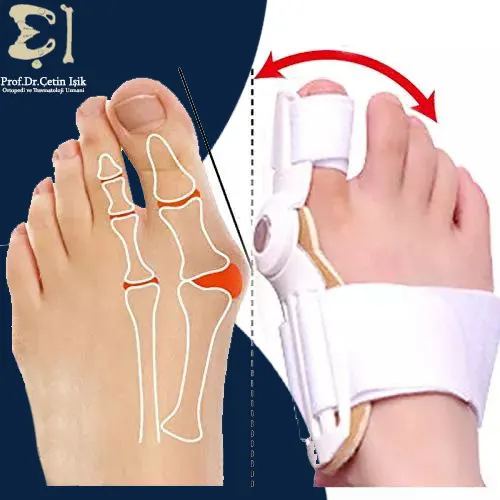
Physical therapy:
Exercise and physiotherapy improve muscle strength and tighten the tendons around the swelling thus correcting good alignment. Massage and ultrasound therapy can also break down soft tissue adhesions and relieve pain and inflammation.
Steroid injections:
The doctor can inject steroids around the protrusion of the big toe bone to reduce pain and inflammation, but this procedure can lead to joint damage when used frequently or injected in high doses or if injected into the joint itself, so we resort to it as a late treatment.
Surgical treatment of bony prominence in the foot
The surgery aims to relieve pain and restore normal function by removing the bump on the big toe, realigning the joint including ligaments, tendons and nerves, and correcting any existing deformity.
The surgical option is suitable for people who complain of:
- Foot bone pain and inflammation that does not improve on conservative measures.
- Severe bony deformity in the foot that one toe may cross inward with the other toe.
- Stiffness that prevents bending or moving the finger.
The surgeon takes x-rays and takes measurements to classify the tumor as mild, moderate or severe, as the more severe the tumors, the more complex and dangerous the surgery.
Surgical options for treating osteoarthritis include:
Tendon and ligament repair: This procedure involves shortening any weakened joint tissue, and this procedure is often done with an osteotomy.
Osteotomy: It is a corrective procedure to reshape the joint, in which doctors use screws or plates to fix the bones.
Spur resection: the surgeon removes the spur from the toe joint, and it is performed along with the osteotomy.
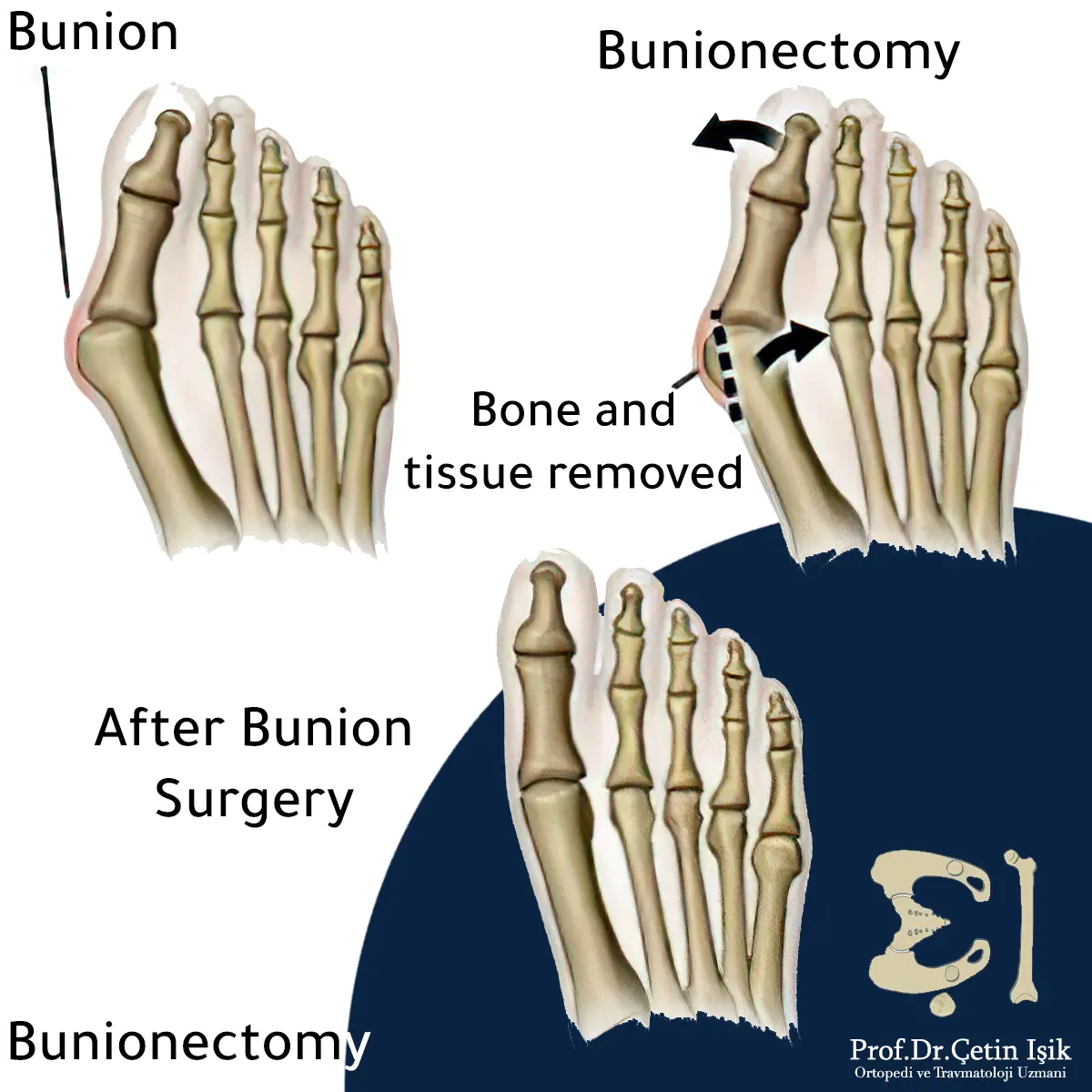
Resection arthroplasty: where doctors remove the damaged part of the big toe joint, which creates more space between the bones of the fingers, and indications for this surgery include:
- Osteoarthritis in the elderly
- Recurrent bone spur after surgical treatment
- Patients who suffer from Foot arthritis
Complications of surgery to treat bony protrusion in the foot
It is difficult to assess the results of surgery due to differences between foot deformities and the surgical techniques used, yet 85% to 90% patients are satisfied with their results.
Possible complications include:
- Recurrence of swelling and recurrence (in 16% cases), occurring only if the bony prominence is removed without correcting the underlying deformity
- Nonunion, where the cut bone fuses very slowly and in rare cases does not heal at all
- Irritation from nails or screws used to fix bones
- Nerve damage and persistent pain
- Infection (less than 1%)
Sources:
Common questions
Options for treating a bunion bunion range from relieving symptoms with painkillers, cold compresses and steroid injections to surgical correction to get rid of the bunion completely.
The price of a bone spur corrector ranges from 10 to 30 dollars, depending on the quality and manufacturer.
- The big toe may return in the future
- Feeling some pain after the surgery, as it takes time to fully recover
- It can limit the types of shoes a person wears during and after recovery
- There is a small chance that the correction will not be successful


